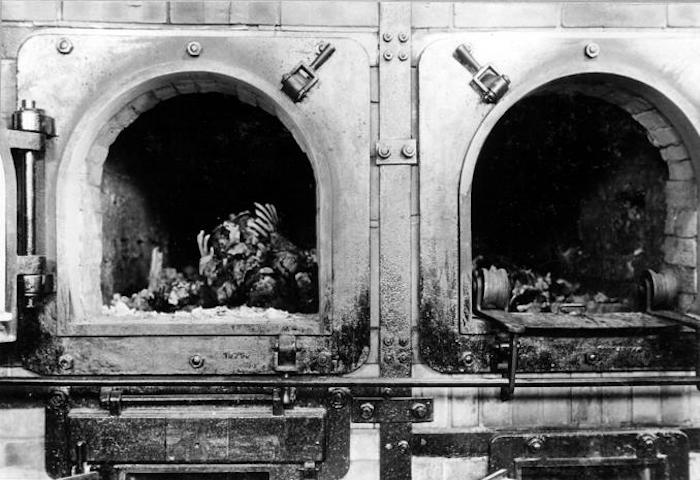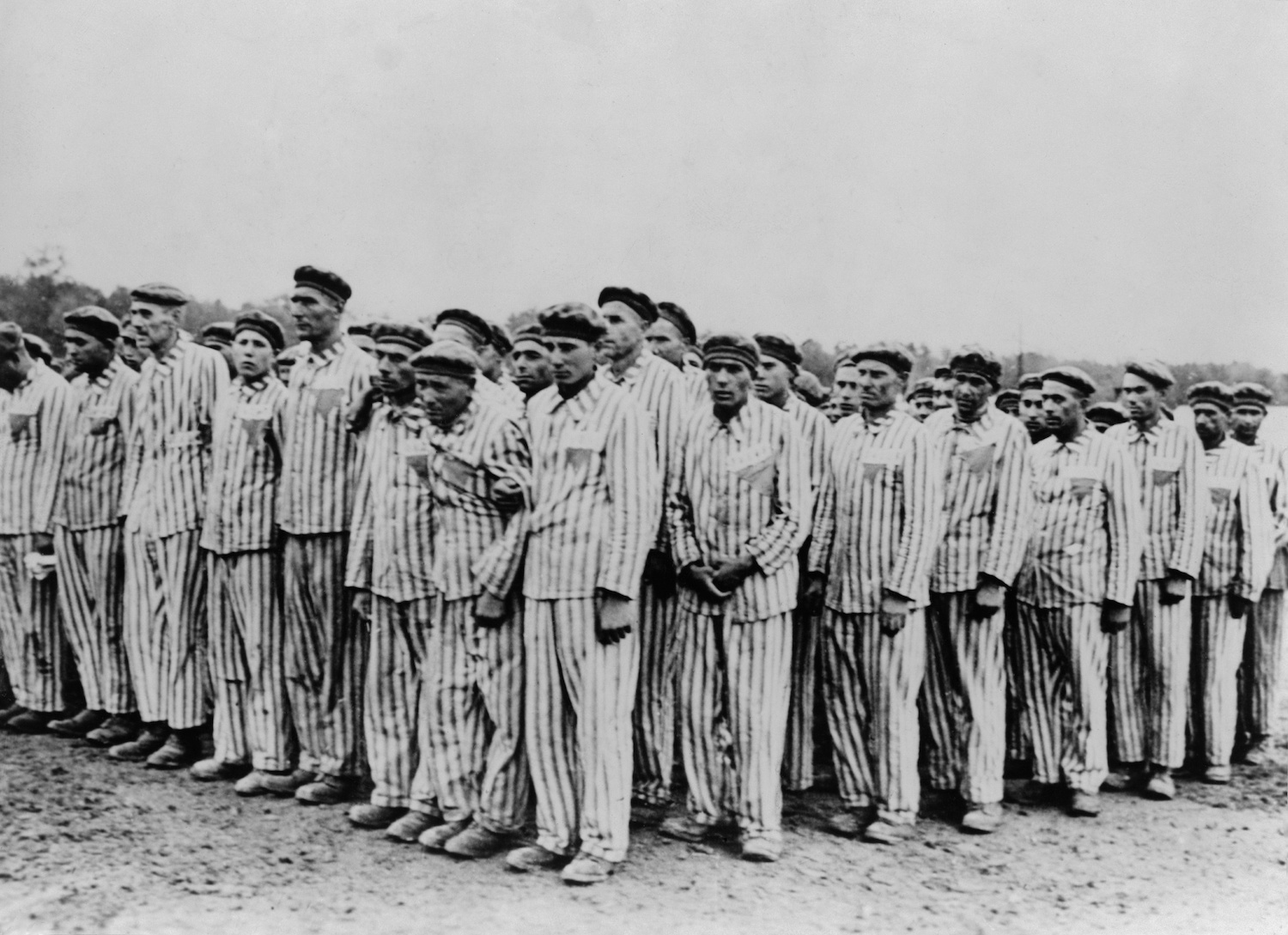1.32 Million Jews Were Killed in Just Three Months During the Holocaust
Operation Reinhard, known as the single largest murder campaign during the Holocaust, was worse than historians imagined. In a mere three months, at least 1.32 million Jewish people died — close to one-quarter of all the Jewish victims who perished during World War II, a new study finds.
The finding is based on an old data set that tallied the number of Jews who were forced from their homes onto trains, which then took them to the death camps in Poland known as Belzec, Sobibor and Treblinka. Once there, the majority of these victims were killed in gas chambers.
This data set allowed study researcher Lewi Stone, a professor of biomathematics at Tel Aviv University in Israel and a professor of mathematics at RMIT University in Melbourne, Australia, to estimate the rate at which the Nazis killed their victims during Operation Reinhard. [Photos: Escape Tunnel at Holocaust Death Site]
Stone's analysis shows how the Nazis worked toward their "goal of obliterating the entire Jewish people of occupied Poland in as short a time [as] possible, mostly within three months," Stone told Live Science in an email.
The mass killing happened quickly and in complete secrecy, which "ensured the Jewish people did not have a chance," Stone said. "And [it] made the formation of organized resistance extremely difficult."
The scale of the killing happened so quickly and was so extreme that it exceeds that of the 1994 Rwandan genocide, which is often considered the most intense genocide of the 20th century, Stone said.

What was Operation Reinhard?
In just 21 months, from March 1942 to November 1943, Operation Reinhard claimed the lives of 1.7 million people. But the bulk of the killing happened during September, October and November of 1942, Stone found.
Sign up for the Live Science daily newsletter now
Get the world’s most fascinating discoveries delivered straight to your inbox.
The reason for the murderous surge can be traced to Adolf Hitler, as well as Heinrich Himmler, a high-ranking Nazi, who announced in July 1942 that almost every Jew in the General Government (German-occupied Poland) should be "liquidated" by the year's end. This order propelled Operation Reinhard forward.
Deutsche Reichsbahn, the German National Railway, kept to a strict schedule in delivering the victims. The Nazis, however, destroyed detailed records about these killings.
But Yitzhak Arad, an Israeli Holocaust historian, managed to compile data about the murders. Arad collected Reichsbahn data on 480 train deportations from 393 Polish towns and ghettos, recording "the location, number of victims of each transportation and final death-camp destination," Stone said. "The data set has been sitting around for years, but hardly anyone has ever studied it, possibly because the subject is so sensitive."
There's currently academic interest in modeling and quantifying wars, conflicts and genocides, Stone said. So, upon coming across Arad's data set, Stone said, "I rapidly became engrossed with the project."
Almost every victim who arrived at these three death camps was murdered, so the data set served as an extraordinary proxy for murder rate, Stone said. After crunching the numbers, Stone found that a minimum of 1.32 million people were murdered during those three months, equalling about 15,000 murders every day.
In all, between 5.4 million and 5.8 million Jews were murdered during the Holocaust, Stone wrote in the study. [25 Grisly Archaeological Discoveries]

Rwandan genocide
Stone decided to go a step further, comparing the rate of the deaths over those three months to that of the Rwandan genocide. During that massacre, the Hutu people killed up to 800,000 Tutsi victims in a mere 100 days.
But despite the hyperintense killing that happened in Rwanda, that event pales in comparison to the murder rate from the three months Stone examined.
To compare each catastrophe over the same amount of time, Stone looked at 100 days from the Holocaust, from July 27 to Nov. 4, 1942. When he tallied the number of deaths from Belzec, Sobibor and Treblinka (totalling about 1 million); the number of people gunned down by death squads (about 301,000); and the number of victims at Auschwitz (about 91,000), he found that 1.47 million victims were murdered, or about 445,700 murders a month.
In comparison, Rwanda's murder rate was about 243,300 per month, he said.
"The beginning claim that the Rwanda kill rate was larger than the Holocaust is both wrong and was never empirically demonstrated," Stone said. "In my opinion, this tells us more about the need to quantify conflicts and wars with more effort, rather than the need to compare genocides."
An outside look
Historians aren't usually experts in statistics, so the new study is "very useful and informative," said Christopher Browning, an emeritus professor of history at the University of North Carolina at Chapel Hill, who was not involved with the research.
However, despite Stone's claim that this issue was understudied, Browning argued that other researchers have also addressed the uneven, methodical way the Nazis killed their victims.
For instance, in his own book "Ordinary Men: Reserve Police Battalion 101 and the Final Solution in Poland" (HarperCollins, 1992), Browning wrote, "In mid-March 1942, some 75 to 80 percent of all victims of the Holocaust were still alive, while 20 to 25 percent had perished. A mere 11 months later, in mid-February 1943, the percentages were exactly the reverse."
In addition, the Rwandan genocide and the Holocaust were very different events, making comparisons difficult, Browning noted. That's because there are two kinds of murder rates: average and peak.
If comparing the average murder rate of the main four years of the Holocaust to that of the 100-day Rwanda genocide, then, yes, there was a more intense, average murder-rate in Rwanda, Browning said. But the peak rate of deaths in the three months that Stone studied was, indeed, higher than the peak rate from the Rwandan genocide, Browning said.
The study was published online Wednesday (Jan. 2) in the journal Science Advances.
Editor's Note: A date in this story was corrected. Operation Reinhard lasted 21 months, from March 1942 to November 1943. Because of a typo, it originally said November 1942.
- 9 Absolutely Evil Medical Experiments
- Images: Missing Nazi Diary Resurfaces
- Image Gallery: WWII Lard, Relics Revealed by Storms
Originally published on Live Science.

Laura is the archaeology and Life's Little Mysteries editor at Live Science. She also reports on general science, including paleontology. Her work has appeared in The New York Times, Scholastic, Popular Science and Spectrum, a site on autism research. She has won multiple awards from the Society of Professional Journalists and the Washington Newspaper Publishers Association for her reporting at a weekly newspaper near Seattle. Laura holds a bachelor's degree in English literature and psychology from Washington University in St. Louis and a master's degree in science writing from NYU.










